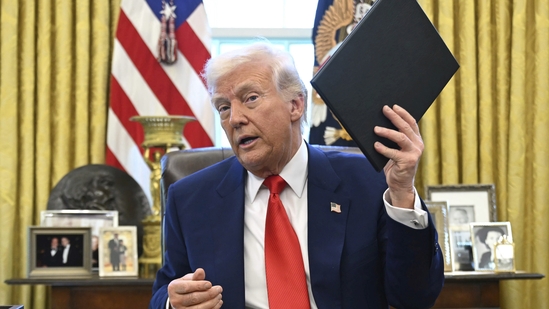Textiles to tech: Two centuries of Indo-US trade resilience
This article is authored by Ushoshi Indira Das is enrolled in Cornell University and based in New York.
On April 2, 2025, the United States (US) imposed reciprocal American tariffs on India. History seems to be repeating itself. Two centuries ago, Washington did the same—only back then it wasn’t every good on the line, but muslin and calico.

In the earliest days of the American republic, manufacturers lacked the means to create high-quality fabric, and they certainly did not have silk, jute, and other raw materials or finished goods. They thus craved commodities such as Indian textiles. The trade ships that arrived in Boston, Philadelphia, and New York were replete with treasures: inexpensive cotton cloth, but also luxury silks, shawls made of camel hair, and woolen wraps. Delicate muslin from Dhaka—the same fabric Empress Josephine of France used for her gowns—became a must-have item among wealthy American women. Silk bandana handkerchiefs were also imported in large quantities as affordable luxury goods. Boston merchant John Stark estimated that a quarter of a million handkerchiefs—many destined to be re-exported—were imported from Calcutta in 1810.
Then war broke out. The war of 1812 severed American trade with India and other countries for three years, giving domestic manufacturers a rare opportunity to grow without foreign competition. By the time the conflict ended, American lawmakers were determined to cement this newfound self-sufficiency. In 1816, they enacted tariffs so steep—ranging from 60 to 70% on Indian cloth—that they effectively barred Indian textiles from its market. This protectionist move, coupled with the industrial revolution, propelled American textile manufacturing forward. Northern power looms and mills processing Southern cotton outpaced India's less efficient machinery. Senator Charles Sumner described the US textile industry, which thrived on both enslaved and cheap labor, including from female and child workers, an "unhallowed union" between "the lords of the lash and the lords of the loom," referring to the Southern cotton plantations' reliance on slave labor to supply Northern mills. Indian cloth, once ubiquitous, faded from American markets. By the late 1820s, Indian imports had plummeted to less than one per cent of total US foreign imports.
But trade doesn’t disappear—it adapts. Indo-American trade pivoted to raw materials. The booming US textile industry needed vast amounts of dye, and India had indigo in abundance. Philadelphia alone consumed $228,000 worth of Indian indigo in 1827. US imports of Indian indigo surpassed $1 million annually by the 1860s.
Saltpeter, essential for gunpowder production, mining, and construction, became another crucial import from India. The US emerged as possibly the world's largest consumer of Indian saltpeter, relying heavily on it until the Civil War's end. Northern demand tripled at the war's onset, cementing India's position as the world's leading producer and reinforcing the deep trade ties between the nations.
Some trades, though, were more unexpected. In 1833, American entrepreneur Frederic Tudor, the ‘Ice King,’ launched an audacious venture, shipping New England ice to Calcutta. This four-month journey exemplified the kind of logistical ingenuity that foreshadowed today's complex tech collaborations. Tudor's ice became a luxury commodity in India, spurring the construction of ice houses in Calcutta and Madras—a parallel to how modern Indo-US tech partnerships are building digital infrastructures.
Today's Indo-US commerce, shaped by restrictions on agricultural products and technological components, mirrors the historical shift towards raw materials. Rare earth elements, crucial for electronics, may be the modern equivalent of saltpeter. Meanwhile, Artificial Intelligence (AI) algorithms serve as the new indigo—a vital input across various industries.
The impact of this centuries-old trade extends beyond economics into culture. Indian motifs like the tree of life became popular in American art, while Indian craftsmanship adorned American homes. Today, Indian influence is evident in yoga studios and Bollywood-inspired fitness classes across the US. Tech giants like Infosys, Wipro, Cognizant, TCS, and IBM maintain significant presences in both countries, reflecting the deep technological interconnections.
As the US and India navigate this new era of tariffs, they continue a long tradition of economic adaptation and innovation. The ingenuity that once sent ice across oceans may well guide these nations through the digital frontier in this renewed age of trade barriers. The resilience of Indo-US trade, proven over two centuries, suggests that creativity and mutual benefit will continue to drive this enduring economic relationship.
This article is authored by Ushoshi Indira Das is enrolled in Cornell University and based in New York.
All Access.
One Subscription.
Get 360° coverage—from daily headlines
to 100 year archives.



HT App & Website







